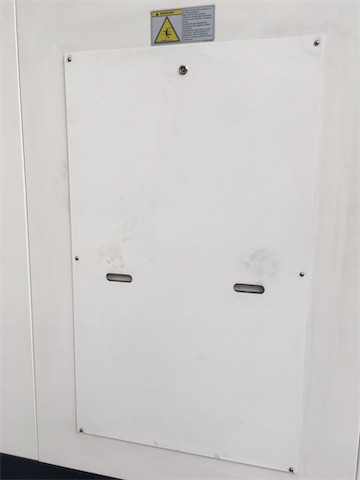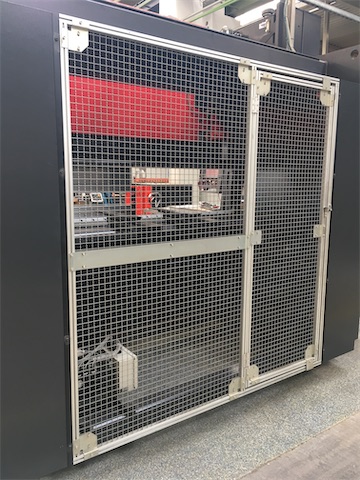Machine Guards DIN EN ISO 14120
Annex I of European Machinery Directive — MD, international standards DIN EN ISO 12100, and DIN EN ISO 14120 (see List of (harmonized) standards) have these essential requirements for fixed and moveable guards:
Fixed Guards
- Suitable only for access once per week or less.
- Must be detachable by tool use only.
- Should not remain in place once unbolted,
- but bolts must stay on guard.
- May also be hinged.
Moveable Guards
- For access more often than once per week.
- No tool use for opening.
- Must be interlocked with all dangerous movement by safety switch.
- Should not close on their own.
- Must have a locking mechanism in case of large inertia or high speed of moving parts.
Standard DIN EN ISO 14120
Back to fixed and moveable guardsWhere hazards cannot be removed by clever inherently safe design, access must be blocked by guards. Fixed guards are the most economic solution for trouble shooting, cleaning, or maintenance once per week or less. Transparent panels give a good view for process supervision. Grilles and cut-outs need an adequate safety distance.
Moveable guards must be chosen for frequent access, as fixed guards might not always be re-attached.
For regular very frequent access, employ two-hand control, light curtain, safety mat or similar protective devices. Make sure to preserve a minimum distance towards hazard area, sucht that dangerous movement can completely be stopped before reached with body parts.
Do not hesitate to contact: Wolfgang Grassberger, Engineering Consultant for expert advice.
FAQ
Back to fixed and moveable guardsMust every machine have a moveable guard?
Access to dangerous parts of a machine must be blocked by fixed or movable guards, or other protective devices must be employed. Both of the latter shall stop any hazardous movement in time, before it can be reached. Choice among these guards must be based on frequency of access. Fixed guards are only suitable when they rarely need to be removed, or else they would probably not be re-attached."
May fixed guards be fitted with hinges?
European Machinery Directive lists fixed, and moveable guards, among others. The former must only be detachable by tool use; while the latter must stop dangerous machine movement when opened, which is called interlocking. Fixed guards may also be hinged. They are however always restricted to rare access as otherwise they would probably not be bolted shut again. Most multinationals demand safety switches for interlocking on any hinged guard. International standard DIN EN ISO 14120 has a lot of detailed requirements for fixed and moveable guards.European Machinery Directive lists fixed, and moveable guards, among others. The former must only be detachable by tool use; while the latter must stop dangerous machine movement when opened, which is called interlocking. Fixed guards may also be hinged. They are however always restricted to rare access as otherwise they would probably not be bolted shut again. Most multinationals demand safety switches for interlocking on any hinged guard. International standard DIN EN ISO 14120 has a lot of detailed requirements for fixed and moveable guards.
All content on this page has been carefully double-checked. As provided free-of-charge, we cannot be held accountable for any errors.
Declaration of Confidentiality Imprint


